Hurricane Lee grows even larger as it barrels north with US East Coast braced for huge waves as forecasters warn it could slam into Maine on Sunday
The latest projections appear to show the growing Hurricane Lee hitting Maine and could impact the New England area in the early hours of Sunday.
As of Wednesday, the storm has triggered a tropical storm warning in Bermuda, and is now less than 500 miles (800 kilometers) from the island, packing winds of 155 miles per hour, according to the National Hurricane Center.
The storm continues to grow as it leaves the Caribbean, with Category 3 winds being felt up to 120 miles from the center and tropical storm force winds being felt up to 240 miles away, which is expected to increase to 300 miles by the weekend.
In just 12 hours, the storm expanded its range by 55 miles.
Analysts say the storm will weaken slightly on Thursday as it hits cooler waters along the east coast of the United States. The same analysts say that although the intensity will decrease, the storm will continue to grow in size as well as increase in speed.
Some models show the storm that will remain close to the Maine-Canada border on Sunday is a post-tropical storm.
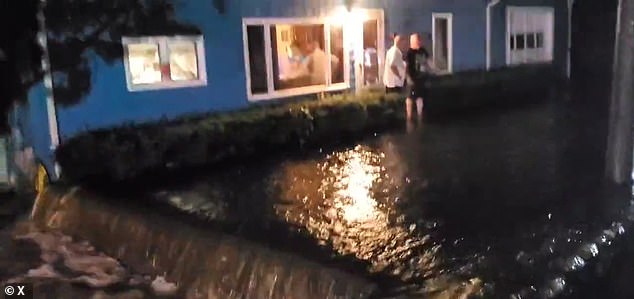
Shocking images showed severe waist-deep flooding thanks to Hurricane Lee as it barreled through Cumberland, Massachusetts, a sign of what could hit Maine this weekend
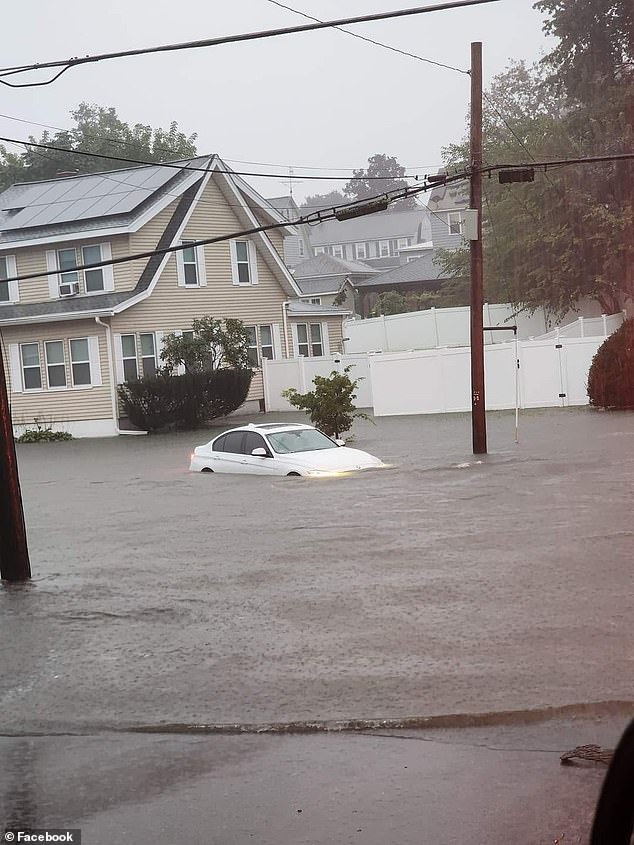
The worst of the storms hit Massachusetts and Rhode Island, and more wet and wild weather was expected to persist in New England throughout the week.
Experts believe they will have a clearer projection of the storm’s path as it moves further north on Wednesday.
“Magnitudes are still expected to increase significantly, and by the end of the forecast period, hazards will extend well beyond the storm center,” Michael Brennan, director of the National Hurricane Center, said in an update Monday.
“The magnitude is still expected to increase significantly, and by the end of the forecast period, hazards will extend well beyond the storm center,” the weather service said.
“There is still a lot of uncertainty about the exact track of how close it will come to the coast of New England and Atlantic Canada in the coming days,” Brennan said, before adding that there “certainly remains a chance for significant implications’. a growing storm.’
AccuWeather has forecast the storm will make landfall in Nova Scotia. “Significant storm surge will occur, along with the strongest winds and the risk of property damage,” forecasters said in a statement.
Even if the storm remains offshore, its size will continue to produce waves, rough surf, huge waves and erosion through the weekend.
Strong winds and rainfall are expected in Rhode Island, eastern Massachusetts and southeastern New Hampshire.
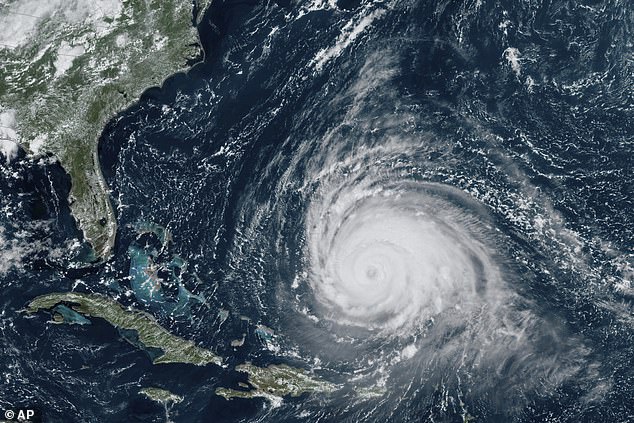
This satellite image from the National Oceanographic and Atmospheric Administration via NASA shows the hurricane moving north
In preparation, New York Governor Kathy Hochul is sending the National Guard to the eastern end of Long Island to prepare for flooding.
“It’s too early to predict what this potentially dangerous weather system will do. Out of an abundance of caution, I have deployed the National Guard and directed government agencies to prepare emergency response resources and be ready to respond to local requests for assistance,” the Democratic leader said in a statement.
The storm has already left its mark on the Caribbean in the Bahamas, the US Virgin Islands and Puerto Rico, as well as most of the US East Coast, causing dangerous surf, heavy rain and rip currents.
Severe flood warnings remain in effect across central Massachusetts, which officials say could be life-threatening — though there have been no reports of deaths in the region due to the severe weather.
Parts of Lower Leominster — about 50 miles from Boston — were evacuated Tuesday as flooding caused problems with the Barrett Park Dam.
The city’s mayor, Dean Mazzarella, said more than 35 centimeters of rain flooded the area, and shocking images showed deep water submerging cars and rushing through the streets at high tides.
“Everything is one big lake,” Mazzarella said Monday. ‘Find a high place somewhere. Find a high place and stay there until this is over.”
Massachusetts Governor Maura Healey also sent emergency boat rescue and response teams to the city.
“My heart goes out to the residents and public safety officials in Leominster and other communities experiencing catastrophic flooding tonight,” she posted on X, formerly known as Twitter.
Similar dangerous scenes were seen in footage from Cumberland, Rhode Island, as residents were forced from their homes amid torrential, waist-deep flooding.
One person who shared images of the flash flood said he has “lived here for 20 years and it has never flooded this bad.”
In another image shared on social media, a huge sinkhole had opened up in the city of 40,000, with one woman saying she was lucky not to fall into it due to the high currents.
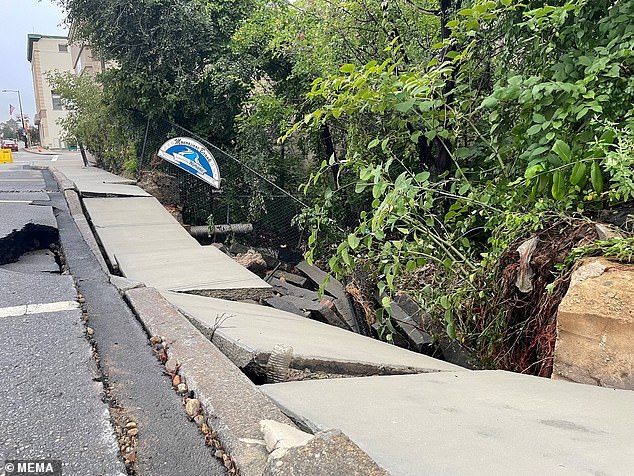
The severe weather caused damage to Leominster’s Barrett Park Dam in Massachusetts, leading to evacuations of the city by emergency services.
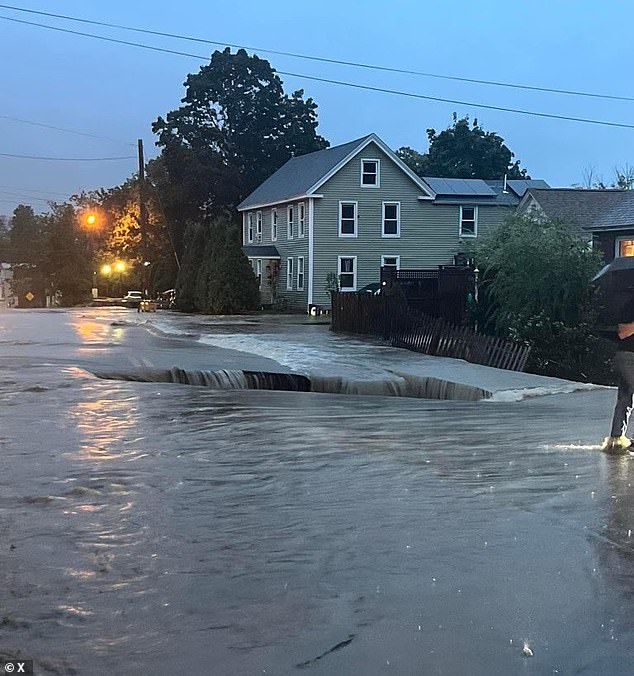
A massive sinkhole opened up in the central Massachusetts city, which one woman says she and her vehicle almost fell into due to the heavy current
Lee is the twelfth storm of the Atlantic hurricane season, which runs from June 1 to November 30 and peaked on Sunday.
Meanwhile, Margot became the fifth hurricane of the season on Monday. It was located about 1,335 kilometers west-southwest of the Azores. It had maximum sustained winds of 80 miles per hour and was moving north at 14 miles per hour. Margot is expected to remain over open water.
The National Oceanic and Atmospheric Administration has forecast 14 to 21 named storms this season. Six to 11 of those are expected to become hurricanes, and two to five of those could develop into Category 3 or higher storms.
Forecasters say the hurricane will continually strengthen and weaken as it moves toward the U.S., partly through a process called an “eyewall replacement cycle.”
Although a natural process, the hurricane’s expanding reach has led to varying estimates of the amount of damage the storm could cause.
